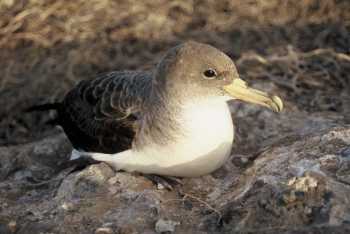Sandra Hervías (Island Ecology and Evolution Research Group (IPNA-CSIC), Tenerife, Canary Islands, Spain) and colleagues write in the journal Parasitology Research on the combined effects of alien predators and ectoparasites on Cory’s Shearwaters Calonectris borealis breeding on Corvo Island in the Portuguese Azores Archipelago.
The paper’s abstract follows:
“Predator activity around the nests induces stress in breeding birds, which may have weaker immunity and are therefore more susceptible to parasite infections. The influence of predators on parasites has only been observed in land birds, and most studies are experimental. As seabird colonies offer excellent conditions for parasites, here we assess the influence of mouse, rat, and cat activity on parasites in Cory's shearwater (Calonectris diomedea borealis). Adults were examined for blood parasites and one adult and the juvenile from 53 nests were inspected for ectoparasites over two consecutive years (2010 and 2011). Nests differed in their physical characteristics and indices of mammal predator activity and were checked weekly to assess breeding success. Our results showed absence of blood parasites. Among the environmental factors, predator pressure received the most support (89 %) from the data as influencing nest ectoparasite intensity. Birds most infected had worse body condition, and breeding success was negatively influenced by predator activity and ectoparasite intensity. To our knowledge, this is the first analysis of the interaction between mammal predators and ectoparasites in seabird species and supports greater protection through eradication efforts. In addition, we provide the first data on the endoparasite fauna of Cory's shearwater.”

Cory's Shearwater, photographed by Paulo Catry
Click here for a related paper by Sandra Hervías.
Reference:
Hervías, S., Ramos, J.A., Nogales, M. & Ruiz de Ybáñez, R. 2013. Effect of exotic mammalian predators on parasites of Cory's shearwater: ecological effect on population health and breeding success. Parasitology Research 112: 2721-2730.
John Cooper, ACAP Information Officer, 14 November 2013

 English
English  Français
Français  Español
Español